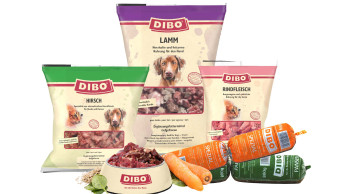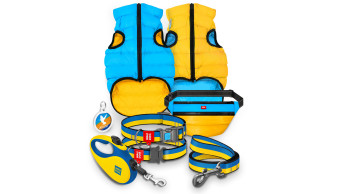It is now a little over 18 months since Brazil decided unilaterally to prohibit the export of freshwater stingrays (family Potamotrygonidae). This decision was taken despite the fact that the CITES Animals Committee had proposed a programme of liaison and consultation with all the South American countries where members of this family are found, and despite the added fact that this proposal was subsequently ratified by the CITES Conference of the Parties that was held during 2007. Since the decision was taken, there have been ongoing discussions between interested parties within Brazil, including government agencies, the ornamental aquatic sector and representatives of Projeto Piaba* to find a workable solution that would allow Brazilian collectors and exporters to compete with their counterparts in neighbouring countries, from which freshwater stingray exports are allowed. News has been scant and hard to come by during this period, but recently, some details have begun filtering through at last...and they represent a welcome change of mood. Catch quotas While collectors and exporters have not been given carte blanche, they will nevertheless now be allowed to compete – to a certain degree. The government has published catch quotas allowing 12,800 pieces (specimens) to be shipped from Manaus and 8,000 from Belem over a period of one year. These allowances were supposed to be in place by June or July, meaning that in 2008 only 50 per cent of the quotas may be collected and exported, with (presumably) the balance applying during the first half of 2009. The new law will be valid until 2010, with progress being monitored in the intervening period, and plans are already under way to submit an industry quota request for 2009 in November or December of this year. The release of wild stocks of freshwater stingrays for collection, albeit limited, means that while Brazilian collectors and exporters may not have achieved parity with their competitors, they are at least beginning to make some headway. There is no doubt that the latest developments mark a welcome and much-needed step in the right direction.John Dawes * Project Piaba is a community-based interdisciplinary project established to understand the ecological and socio-cultural systems of the middle Rio Negro basin, Amazonas, Brazil, in order to conserve and maintain the live ornamental fishery and other renewable resources at a commercially feasible and ecologically…

Welcome change of mood
It is now a little over 18 months since Brazil decided unilaterally to prohibit the export of freshwater stingrays (family Potamotrygonidae). This decision was taken despite the fact that the CITES Animals Committee had proposed a programme of liaison and consultation with all the South American countries where members of this family are found, and despite the added fact that this proposal was subsequently ratified by the CITES Conference of the Parties that was held during 2007. Since the decision was taken, there have been ongoing discussions between interested parties within Brazil, including government agencies, the ornamental aquatic sector and representatives of Projeto Piaba* to find a workable solution that would allow Brazilian collectors and exporters to compete with their counterparts in neighbouring countries, from which freshwater stingray exports are allowed. News has been scant and hard to come by during this period, but recently, some details have begun filtering through at last...and they represent a welcome change of mood. Catch quotas While collectors and exporters have not been given carte blanche, they will nevertheless now be allowed to compete – to a certain degree. The government has published catch quotas allowing 12,800 pieces (specimens) to be shipped from Manaus and 8,000 from Belem over a period of one year. These allowances were supposed to be in place by June or July, meaning that in 2008 only 50 per cent of the quotas may be collected and exported, with (presumably) the balance applying during the first half of 2009. The new law will be valid until 2010, with progress being monitored in the intervening period, and plans are already under way to submit an industry quota request for 2009 in November or December of this year. The release of wild stocks of freshwater stingrays for collection, albeit limited, means that while Brazilian collectors and exporters may not have achieved parity with their competitors, they are at least beginning to make some headway. There is no doubt that the latest developments mark a welcome and much-needed step in the right direction.John Dawes * Project Piaba is a community-based interdisciplinary project established to understand the ecological and socio-cultural systems of the middle Rio Negro basin, Amazonas, Brazil, in order to conserve and maintain the live ornamental fishery and other renewable resources at a commercially feasible and ecologically…

 Menü
Menü






 11-12/2008
11-12/2008












 Newsletter
Newsletter